Don’t Toss Those Tangerine Peels! Here’s How to Actually Use Them
For as long as I can remember, I’ve been working with plants. My journey really kicked off in my grandmother’s kitchen, a place where absolutely nothing went to waste. She had this incredible knack for seeing potential in the things most of us just toss in the compost bin. To her, tangerine peels weren’t trash; they were a future ingredient, packed with flavor and fragrance. That simple lesson has stayed with me through all my years of messing around with herbs and even working in professional kitchens.
In this article
That bright, zesty peel holds so much more than just a pretty smell. It’s loaded with compounds that have been used for ages in everything from cooking to traditional home remedies.
You’ve probably seen articles making huge promises about tangerine peels, but they rarely get into the nitty-gritty of how to actually do anything with them. This guide is different. I’m going to walk you through my hands-on process, covering how to choose and prep your peels the right way. We’ll talk about simple kitchen uses, more advanced projects, and most importantly, we’ll get real about safety. This isn’t about miracle cures; it’s about respecting a potent ingredient and using it wisely.
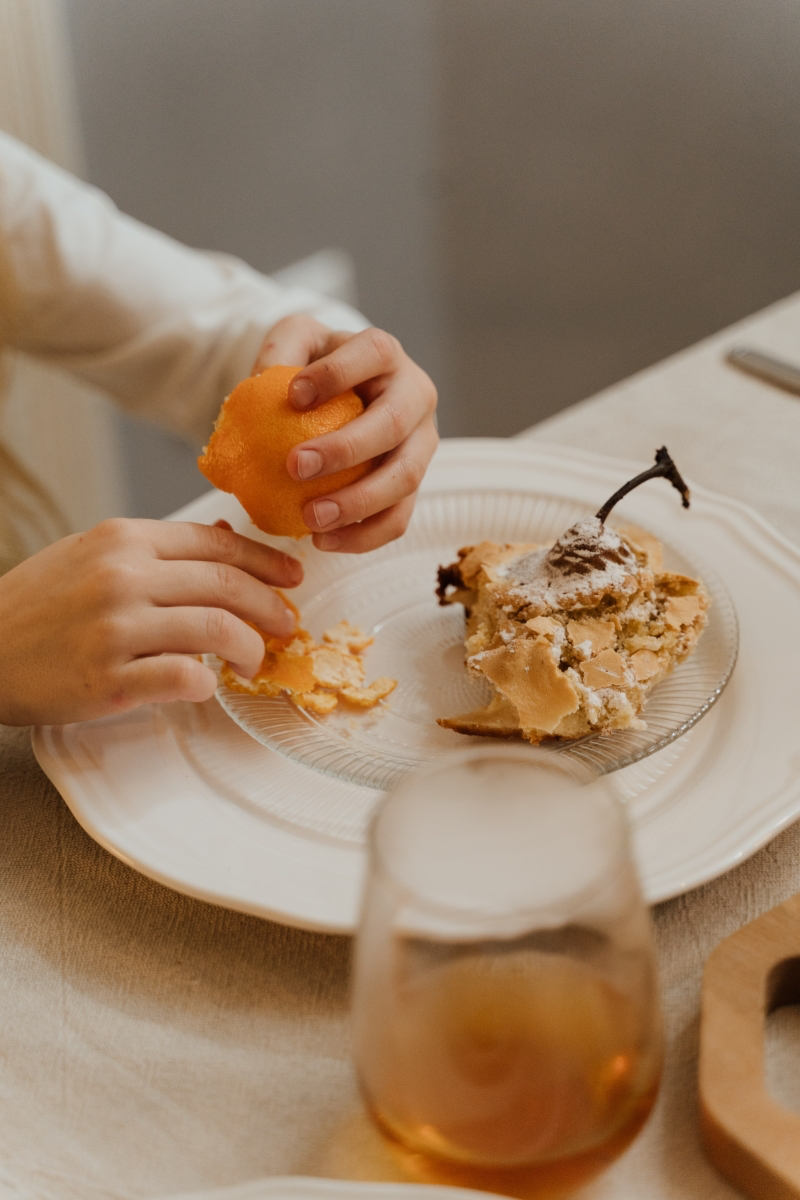
Quick Win: In a rush? Try this right now. The next time you peel a tangerine, let the peels dry on a plate for a few days. Once they’re crispy, drop a few strips into your sugar jar. In about a week, you’ll have incredible tangerine-infused sugar for your coffee or tea. Easy, right?
First, a Little Science (The Fun Part!)
To get the most out of your peels, it helps to know what you’re working with. Honestly, this is the key to making your projects turn out great. The peel has two main layers, and they do totally different things.
The outer, colored layer is the zest, technically called the flavedo. This is where the magic lives. It’s full of tiny sacs of essential oils. If you bend a fresh peel, you can actually see a fine mist spray out—that’s the good stuff! The main oil gives tangerines that classic, uplifting scent and is the reason citrus is so popular in natural cleaners.
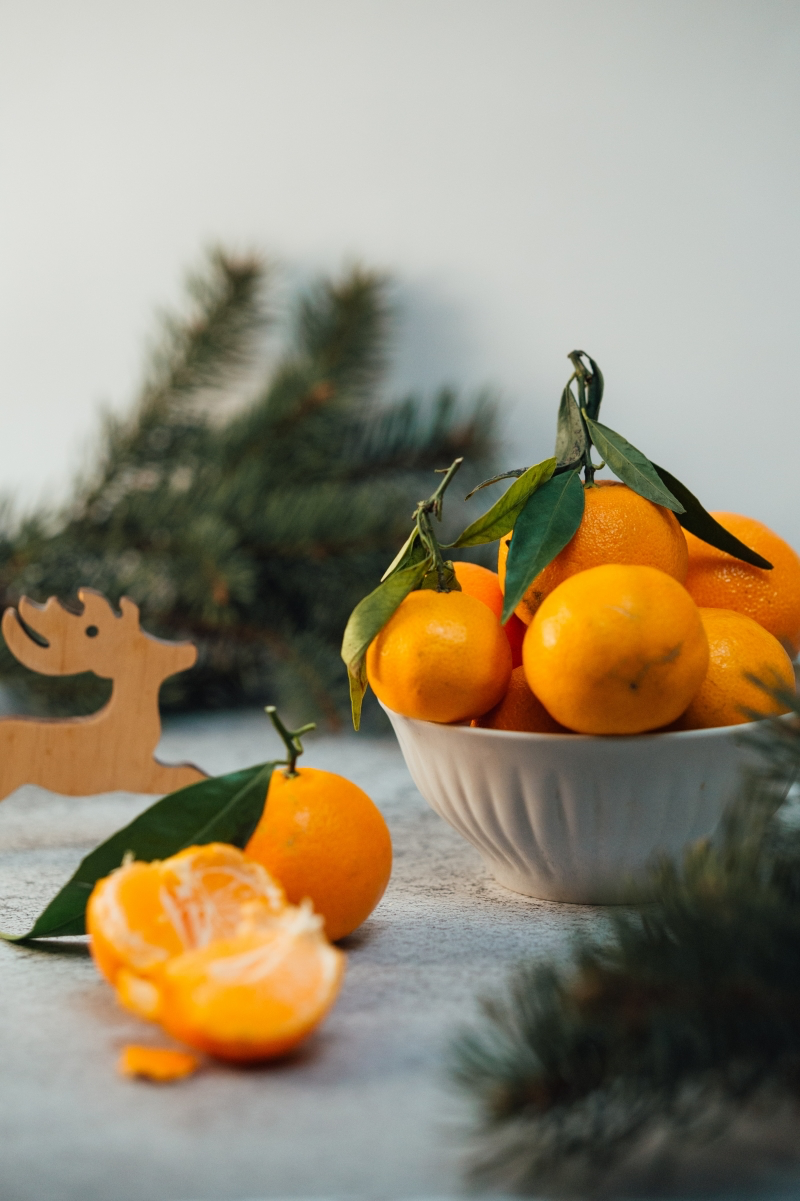
Right underneath is the white, spongy part called the pith, or albedo. This part is pretty bitter, and that bitterness comes from compounds called flavonoids. While these compounds are studied for various reasons, for our purposes, their main job is making things taste sharp. So, for most recipes, the goal is to get that fragrant orange zest while leaving the bitter white pith behind.
Why does this matter? Well, high heat can destroy those delicate essential oils in the zest. So if you’re going for amazing aroma, you’ll want to use low heat or no heat at all. But if you’re trying to extract things from the pith, boiling might be the way to go. See? A little science turns guesswork into a craft.
Prepping Your Peels Like a Pro
How you prepare the peel is everything. A poorly prepped peel can be bitter, weak, or even carry stuff you don’t want. Here’s the step-by-step process I swear by.
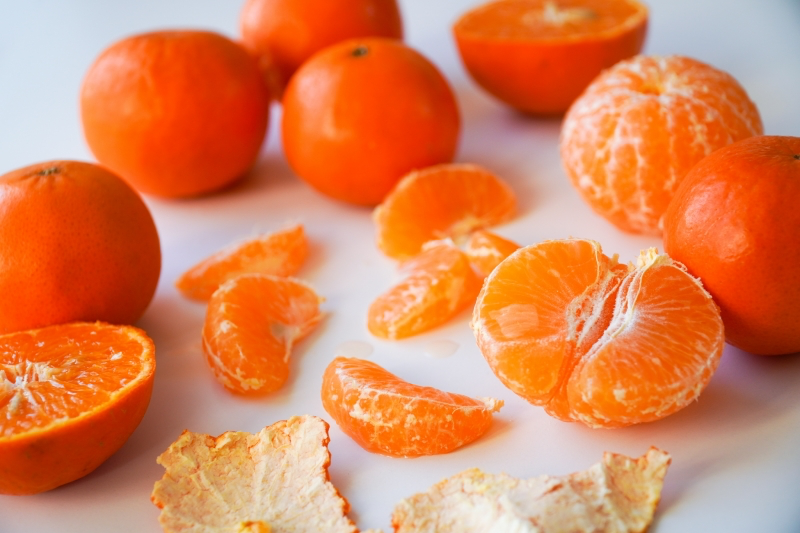
Step 1: Get Good Fruit and Clean It Well
Your finished product is only as good as your starting material. Whenever you can, spring for organic tangerines. Conventional citrus is often sprayed with pesticides and coated with wax, which you really don’t want in your final product. Expect to pay around $4-$6 for a pound of organic tangerines, but it’s worth it for peace of mind.
By the way, this works for almost any tangerine variety—clementines, satsumas, you name it. They all have great peels.
If you can only get conventional fruit, you’ll need to clean it thoroughly. For any internal use, I’d honestly stick to organic.
Here’s how to wash them:
- First, just rinse the fruit under cool running water.
- Next, give them a bath in a bowl with one part white vinegar to four parts water. Let them soak for about 15 minutes to help break down any surface residue.
- After the soak, give each tangerine a good scrub with a soft vegetable brush.
- Rinse them one last time and pat them completely dry. This step is non-negotiable!

Step 2: Peeling for Perfection
The goal here is to get all that beautiful orange zest with as little of the bitter white pith as possible. A sharp vegetable peeler or a zester is your best friend here. A good Microplane zester is a game-changer and costs about $15, but you can absolutely get by with a simple $5 vegetable peeler.
If you’re using a peeler, apply gentle pressure to shave off thin strips. If you see thick white stuff on the back, you’re pressing too hard. For a microplane, just grate lightly around the fruit. This is perfect for fine zest you want to use right away in baking.
A common mistake is not checking the peels afterward. If you have some thick white pith on your strips, take a moment to scrape it off with a small paring knife. It’s a bit tedious, but it makes a world of difference in the final taste.
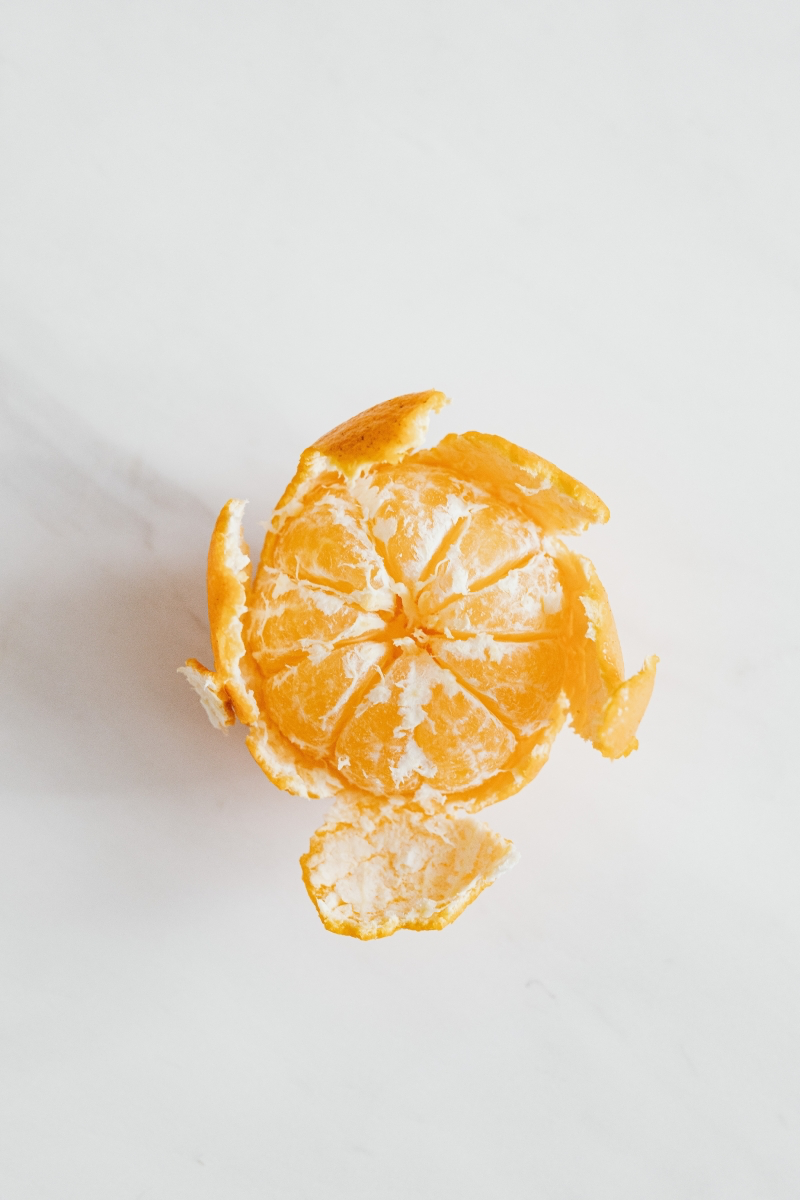
Step 3: Drying for Long-Term Storage
Fresh peels are great, but drying concentrates their flavor and lets you keep them for months. Here are the three best ways to do it:
- Air Drying: This is the easiest method. Just spread your peels in a single layer on a screen or a baking sheet in a warm, dry spot away from direct sun. It can take a few days to a week. They’re done when they are brittle and snap easily. If they feel leathery, they’re not dry enough and could get moldy—a common pitfall!
- Oven Drying: This is much faster. Set your oven to its lowest temperature, usually around 150-170°F (65-75°C). Spread the peels on a sheet and check them every 20-30 minutes. It’ll take 1-3 hours. A quick tip: If your oven’s lowest setting is higher, say 200°F, you can still do this! Just prop the oven door open with a wooden spoon to let heat and moisture escape. You want to dehydrate, not toast them.
- Dehydrator: If you have one, this is the most reliable option. Set it to a low temp, around 125°F (52°C), and let it run for 6-10 hours. It gives you perfectly consistent results.
Once they’re totally dry and cool, store them in an airtight glass jar in a dark cabinet. They’ll easily last for a year.
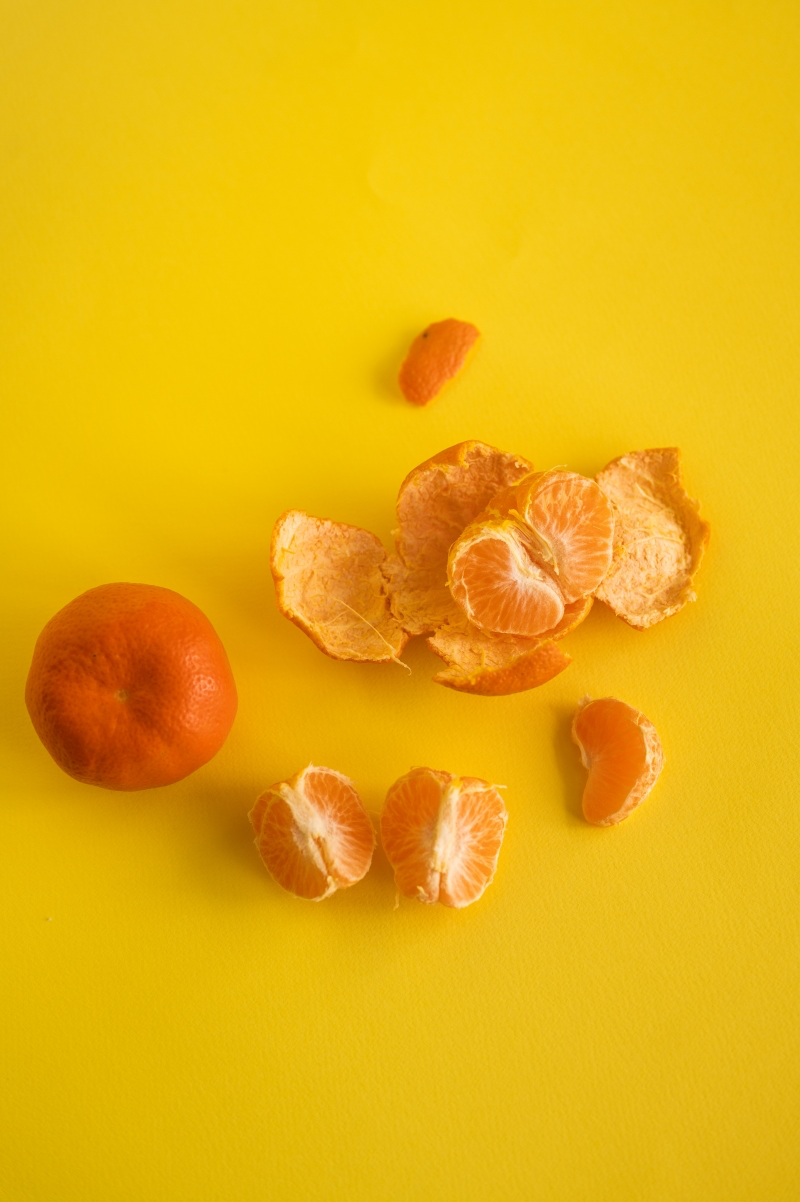
How Much Dried Peel Equals Fresh?
This is a question I get all the time! People want to know how to substitute their homemade dried peel in a recipe that calls for fresh zest. Because drying concentrates everything, you’ll need less.
A good starting point is:
1 teaspoon of dried, powdered peel is roughly equal to 1 tablespoon of fresh zest.
Think of it as a 1-to-3 ratio of dried to fresh. Of course, this is just a guideline. The best way is to start with a little less, taste, and add more if you need it. You can always add more, but you can’t take it out!
A World of Inspiration
Using citrus peels is a practice that spans the globe, with traditions focusing on different aspects of the peel’s power.
In traditional Chinese wellness, for example, aged tangerine peel, known as Chenpi, is a treasured ingredient. The peels are aged for years, sometimes even decades, which transforms their properties from harsh to mellow and deeply fragrant. This tradition sees the peel as something that gets better with time, often used to support digestion and warm the body.
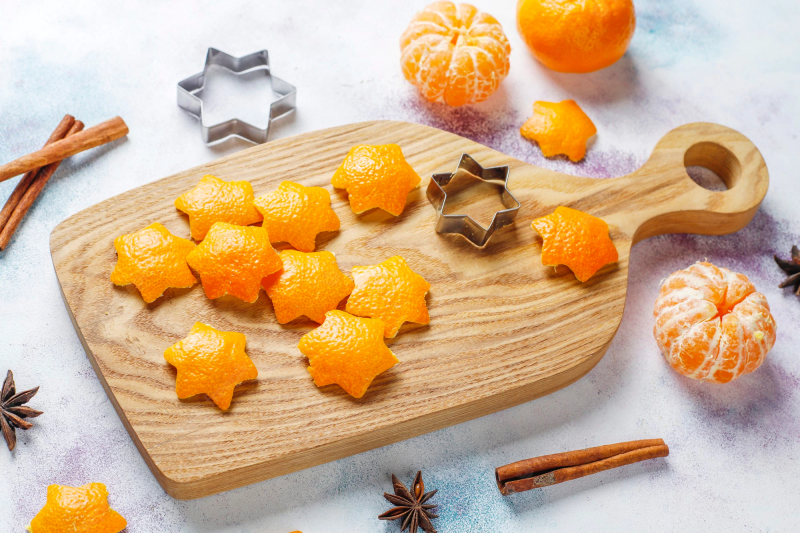
Over in the Mediterranean, citrus peels are all about celebration. They’re candied by simmering them in sugar syrup until they’re sweet and chewy, then added to rich cakes and pastries. They also form the basis of amazing liqueurs. Think of it as capturing the soul of the fruit in a bottle, focusing purely on its incredible flavor and aroma.
And here in the States, tangerine peel is making its way into modern food culture. I’ve seen barbecue pitmasters add powdered peel to their rubs for a bright note that cuts through rich, smoky meat. In the cocktail world, a fresh peel expressed over a drink releases its oils and completely changes the experience. Bartenders even make something called an oleo-saccharum—a fancy name for a syrup made by letting sugar pull the oils directly from fresh peels. It’s a fantastic, no-heat way to get the purest tangerine essence.
Putting Your Peels to Work at Home
Alright, let’s get practical. Here are some of my favorite, foolproof ways to use your beautifully prepared tangerine peels.
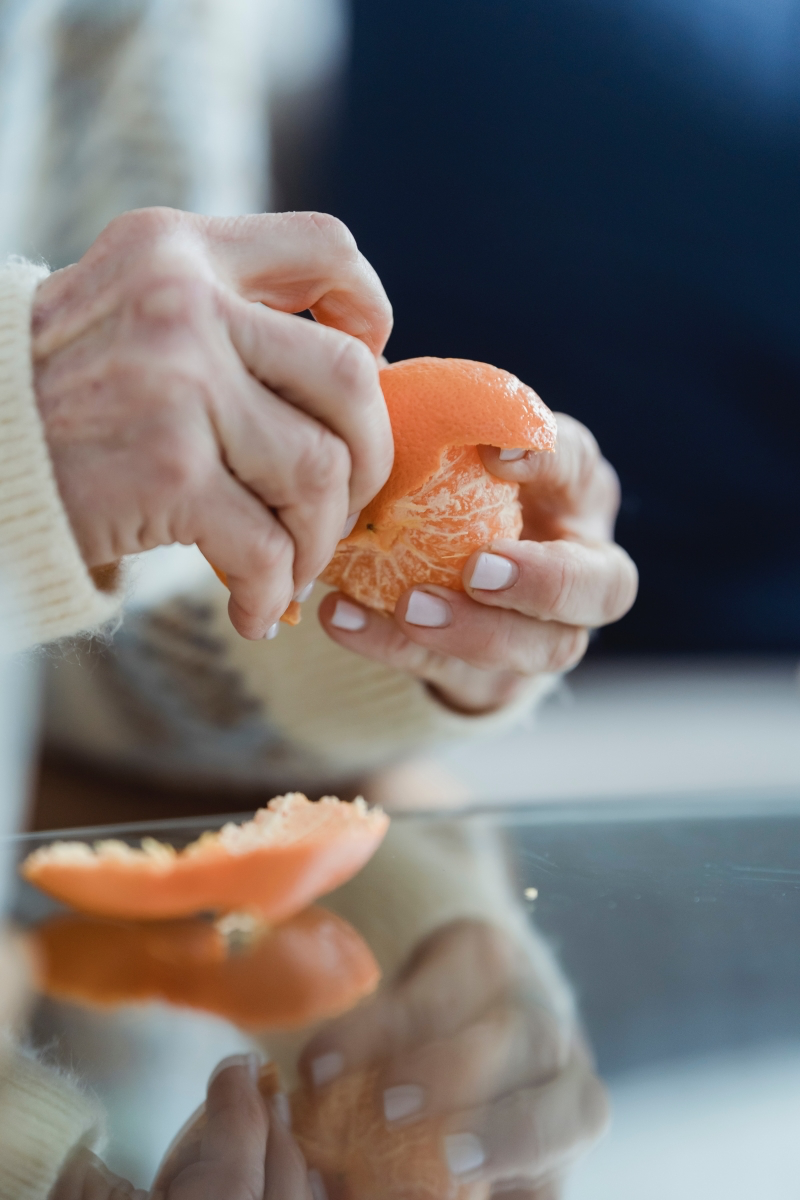
- Tangerine Powder: Grind your bone-dry peels in a spice grinder. This fine powder is amazing. Add a quarter teaspoon to pancake batter, sprinkle it over yogurt, or mix it into a rub for chicken or fish.
- Tangerine Infused Sugar: As I mentioned in the quick win, just drop a few large strips of dried peel into a jar of sugar. Let it sit for a week, shaking occasionally. The sugar will pull out all those fragrant oils. Perfect for coffee, baking, or rimming a cocktail glass.
- Simple Tangerine Tea: For a wonderfully fragrant and soothing drink, add a one-inch strip of dried peel to a cup of hot water and let it steep for 5-7 minutes. It’s lovely on its own or with a bit of ginger or cinnamon. Just don’t boil the peels directly, as that can make the tea bitter.
Ready for the Next Level? Advanced Projects
Once you’ve mastered the basics, you might want to try these more advanced preparations. A little precision goes a long way here.
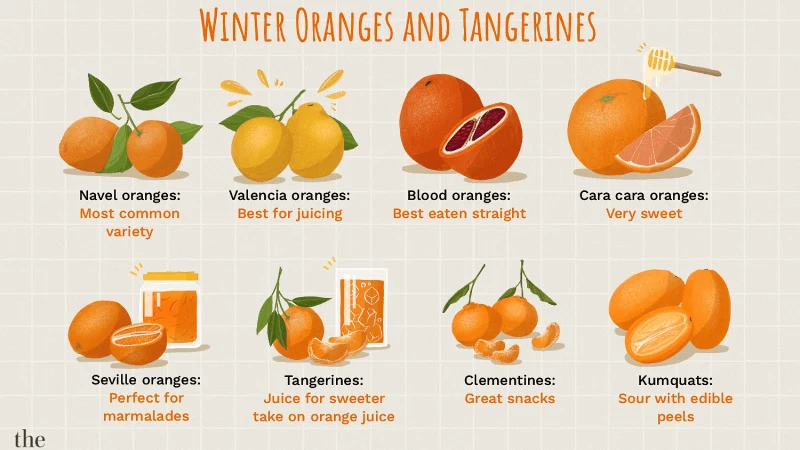
Making a Flavor Tincture
A tincture uses alcohol to pull out and preserve a plant’s flavors. Let’s be crystal clear: this is a flavoring agent, like vanilla extract, not a medicine. It’s fantastic for adding a pop of pure tangerine flavor to drinks, frosting, or seltzer water.
What You’ll Need:
- A neutral spirit like vodka or white rum, at least 80-proof (40% ABV). (~$15-25)
- Dried tangerine zest (make sure it has very little white pith!).
- A clean glass jar with a tight lid. (~$2)
For a tincture, it’s super important to use dried peel. Why? Because fresh peels contain water, which dilutes the alcohol and can mess with preservation, potentially leading to spoilage. Dried peel gives you a cleaner, more stable, and more potent flavor extraction.
A good starting ratio is 1 part dried peel to 5 parts alcohol (1:5) by weight to volume. So, you’d use 20 grams of dried peel in 100 milliliters of alcohol. Combine them in your jar, seal it, and let it sit in a dark place for 4-6 weeks, giving it a little shake every day. Then, just strain it well and bottle it. It’ll last for years!
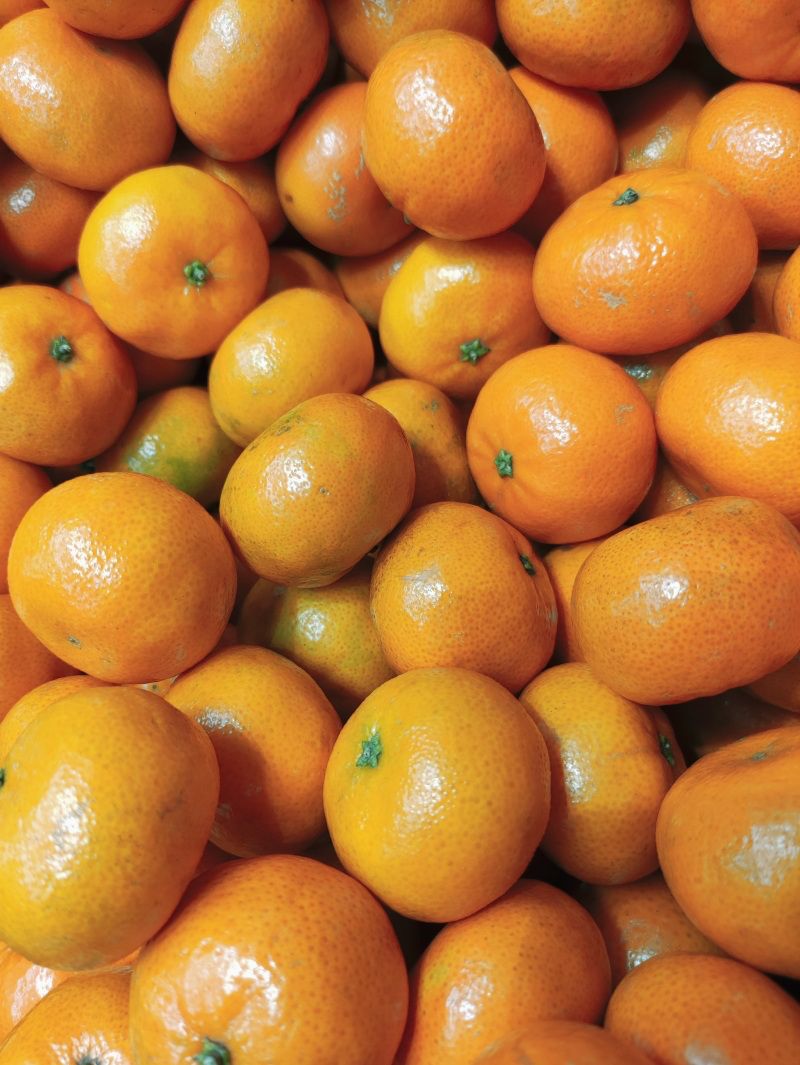
Creating an Oleo-Saccharum (Oil-Sugar)
This is a classic bartender’s trick that sounds way fancier than it is. You’re basically using sugar to massage the essential oils out of fresh peels.
Just take wide strips of zest from 4-5 fresh tangerines (no pith!), put them in a bowl with about a cup of sugar, and muddle them together. Really press and bruise the peels into the sugar. Cover the bowl and let it sit on the counter for a few hours or even overnight. You’ll come back to a rich, fragrant syrup. Remove the peels and store the syrup in the fridge for up to a week. It’s unbelievable in lemonade or cocktails.
The All-Important Safety Talk
Okay, this is the most important part of this whole guide. Just because something is natural doesn’t automatically mean it’s safe without precautions. Please read this carefully.
A Critical Warning on Medical Claims: I once saw an article suggest using a tangerine peel tea to manage diabetes. Let me be 100% clear: That is dangerous and deeply irresponsible advice. Never, ever use an herbal remedy to replace prescribed medication for a serious condition. Always talk to your doctor before adding any new supplement to your routine, especially if you have a health condition.
Folk Use vs. Medical Treatment: Some old folk remedies suggest rubbing peels on things like nail fungus. While the oils might have mild antimicrobial properties, this is not a reliable cure. Don’t delay getting proper medical treatment by trying unproven remedies first.
Heads Up! Phototoxicity is Real: This is a big one. Many citrus oils are phototoxic. This means if you get the concentrated oil on your skin and then go in the sun, you can get a nasty, burn-like rash. I had a student who learned this the hard way after zesting tangerines and then eating lunch outside—he came back with painful red marks on his hands. Always wash your hands thoroughly with soap and water after handling lots of fresh peels.
Finally, if you’re interested in using plants for wellness, please seek out a qualified professional, like a clinical herbalist or a naturopathic doctor. They have the training to give you advice that’s safe and tailored to you. For everything else, I hope you have fun exploring the amazing world of tangerine peels in your kitchen!
Inspirational Gallery with Photos
- Fills your home with an incredible, natural citrus scent as it burns.
- Catches a spark easily, making campfire or fireplace lighting a breeze.
The secret? Tangerine peel fire starters. Simply let your peels dry completely until they are hard and brittle. The natural oils are highly flammable and act as a perfect, fragrant kindling.
The single biggest mistake: Leaving too much of the white pith attached. This spongy layer is intensely bitter and can ruin the delicate, sweet flavor of your infusion or dish. When prepping, aim to get only the colorful outer zest. If you get some pith, gently scrape it away with the back of a spoon before drying.
What about pesticides and wax on non-organic tangerines?
A valid concern! For non-organic citrus, a thorough cleaning is essential. Scrub the whole fruit vigorously under warm running water with a vegetable brush. A soak in a solution of one part white vinegar to three parts water for 15 minutes can also help break down wax coatings and surface residues. Always rinse well before peeling.
Did you know? Traditional Chinese Medicine has utilized aged tangerine peel, known as ‘Chenpi,’ for centuries to aid digestion and respiratory health. The peels are often aged for years, increasing their potency and value.
Forget synthetic air fresheners. For a true winter welcome, simmer a handful of dried tangerine peels in a small pot of water with a cinnamon stick and a few whole cloves. The steam carries a warm, spicy, and uplifting fragrance that genuinely fills a room, creating an instant sense of coziness. It’s the scent of the holidays, made from something you were about to throw away.
Beyond a simple kitchen scrap, tangerine peel holds a place of honor in global traditions. In China, ‘Chenpi’ is a celebrated ingredient:
- Peels are aged for years, sometimes decades.
- The aging process mellows the bitterness and develops complex, deep flavors.
- It’s used in soups, stews, and traditional remedies, transforming the humble peel into a profound, savory element.
Microplane Zester: Perfect for removing only the oil-rich flavedo, creating a fine zest ideal for baking and infusions. It avoids the bitter pith almost entirely.
Vegetable Peeler: Great for creating wide strips for candying or infusing liquids like vodka or oil. You’ll likely need to scrape off any attached white pith with a small knife.
The choice depends on your project’s final texture!
The powerful cleaning ability of citrus comes from a compound called d-limonene, which makes up over 90% of the oil in tangerine rind.
Harness this natural degreaser by filling a jar (a classic Mason jar works perfectly) with tangerine peels and covering them with white vinegar. Let it infuse for two weeks, then strain. Dilute the resulting liquid 1:1 with water in a spray bottle for a powerfully effective and wonderfully scented all-purpose cleaner.
- Spread peels in a single layer on a baking sheet.
- Air-dry in a warm, dry spot for 2-3 days, or bake at your oven’s lowest setting (around 200°F/95°C) for 20-30 minutes until brittle.
- Store in an airtight jar, like those from Kilner or Le Parfait, away from direct sunlight to preserve the essential oils.
No tangerines on hand? No problem. Other citrus peels offer unique twists for your projects:
Orange Peel: A classic, sweeter, and less floral alternative. Perfect for all-around use, especially in baked goods.
Lemon Peel: Sharper and brighter. Excellent for teas and pairing with savory herbs like rosemary in an infused oil.
Grapefruit Peel: More complex, with a signature bitter note that works beautifully in cocktail syrups or infused spirits like gin.










